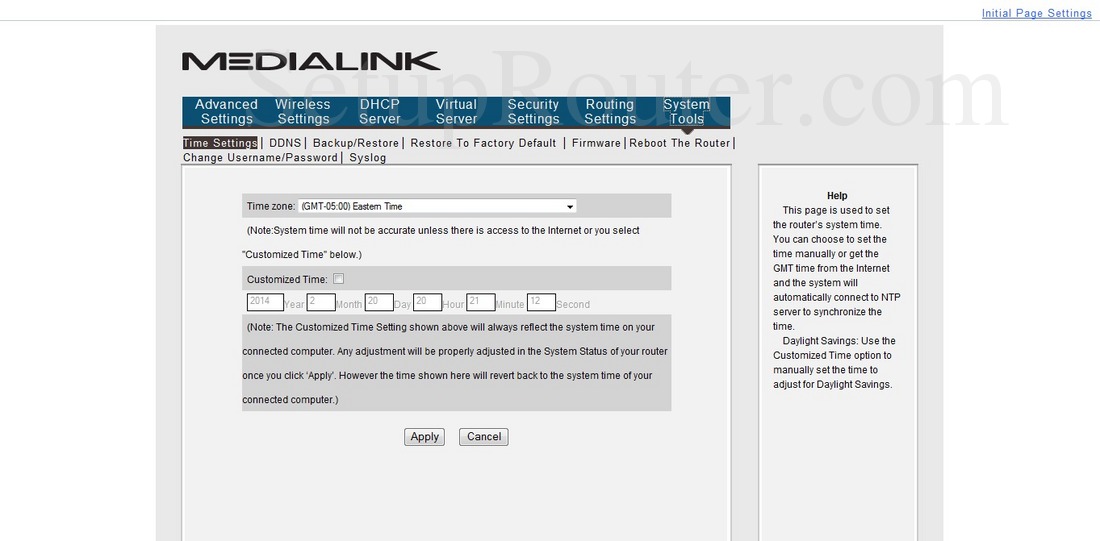


Use a LAN port on the new wireless router, and connect it with a Cat5 network cable to one of the LAN ports of the existing gateway. It is time to connect the reconfigured wireless access point to the network. It is important to have only one device acting as a DHCP server, and that the IP address of the access point is in the same range as the main router. In this figure, my new wireless router/access point is set to use 192.168.1.2 as its IP address, and I've disabled DHCP, so it will not interfere with the DHCP server from my gateway. I have to use any other address in the 192.168.1.x range for the access point: In my case, my main gateway/LAN router is set to 192.168.1.1, and it is serving dynamic IPs via DHCP in the range 192.168.1.10 - 192.168.1.100. Second, you need to disable the DHCP server on your new AP, so there is only one DHCP server on the network. First, you need to change its internal/LAN IP address to an unused address in the same range/subnet as all your other LAN devices. Once logged into the admin interface of the wireless router, you need to do two things. Step 4: Configure the wireless router / AP It is usually done by simply typing the IP address of the router in your browser's address bar. Log into the admin page of the access point (you can find it's IP address as you did in step 1 for your main router). reboot, or use the "ipconfig /renew" command in Command prompt to force it to get an IP address from the access point connect it to a LAN port on the access point using a Cat5 network cable set your client computer to obtain its IP automatically (default behavior in Windows) I'll refer to it as the " Access point" from now on. You need to connect a computer (via a LAN port) to the new wireless router to be used as an access point. Step 3: Connect a computer to the wireless router/AP
#Medialink router not working password
Note: If you don't know the password to your router's admin interface, you may want to lookup the defaults in its manual, sometimes on a sticker on the router itself, or in our hardware database of over 4000 routers. Login to your gateway's admin interface, usually by typing its IP address in your web browser, and find the DHCP range: You need to find the range of IPs used for DHCP so you can later set your access point to use an IP address outside that range (but on the same subnet). What that means is, the router acts as a DHCP server, and serves IP addresses dynamically, as needed to the client computers. Step 2: Connect to your router administration interface to find the DHCP rangeīy default, LAN clients are usually set to obtain their IPs automatically. It is usually in the .x range.Īlternaticely, you can try connecting to your router's default IP address by looking it up in our routers database. The " IP address" line in the above figure shows your computer's IP, while the "Default Gateway" is your main existing router that provides your internet connection. In this example, my ISP-provided gateway/router (the "Default Gateway") is set to 192.168.1.1. Under Windows, the easiest way to do this is drop to command prompt (Start > Run > type: cmd) and type: ipconfig You need to find the internal IP address of your existing modem/gateway/router that connects your LAN to the internet. Step 1: Find the IP addresses of your existing gateway/router and clients More detailed step by step instructions on how exactly to convert and use your wireless router as an access point are below: Do not use the Internet/WAN port on the wireless router to be used as an acces point. In essence, the new wireless router/access point needs to be configured to use a LAN IP address in your network range (the same subnet as your other devices), and you need to connect one of its LAN ports to the existing gateway/router. Instead of using your wireless router as intended (NAT routing, DHCP client/server, PPPoE client, etc.), converting it into a wireless access point will save you a lot of headackes and make the configuration much simpler. However, introducing a second NAT router on the network is not a good idea, especially without some tweaking to set it up correctly. Adding an access point to a wired network already in place, or to one where the main NAT router is provided by the ISP is usually the easiest solution. Wireless routers seem more common, and are often priced even lower than wireless access points. I've often found it useful to get just the wireless functionality out of a WiFi router and reuse it as an access point.


 0 kommentar(er)
0 kommentar(er)
